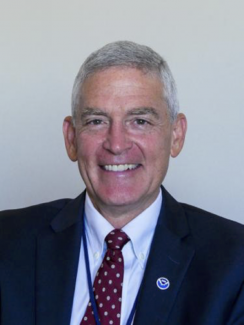NOAA and the National Weather Service (NWS) are embarking on a new strategy of community engagement for developing the numerical weather prediction models that provide NWS forecasters with the best possible guidance. By engaging the broader numerical modeling community, NWS will leverage the vast modeling expertise that resides therein, since each model developer offers a unique perspective about modeling challenges and possible solutions.
The goal of this community effort is to evolve the Next Generation Global Prediction System (NGGPS) towards a national unified Earth system modeling framework for operations and research, to the mutual benefit of both. A Unified Forecasting System (UFS) will function on temporal scales from seasonal to sub-seasonal (S2S) on the order of months, down to short-term weather prediction on the order of hours to days. The UFS will also work across spatial scales, from global-scale predictions down to high-resolution, convection-resolving local/regional scales. Operational implementations of the UFS will be guided by the NWS’s National Centers for Environmental Prediction Environmental Modeling Center that leads the integration of research innovations into operational models.
The UFS is being developed by NOAA, other federal partners, and the broader research and academic community to build the best national modeling system possible. The definition of “community” is important, and not all community efforts will be identical. We are learning from prior and ongoing community modeling efforts (such as WRF, CESM, WW3, MOM6, etc.) and are adopting best practices that meet our specific situation.
NOAA recognizes that the UFS must support the needs of both operations and research. Without that linkage, the incentives will not be there for the research community to help make improvements that will benefit operational predictions, nor will operational innovations feed back into the models used for research. Building a community model involves both give and take from the operational and research sides. Lessons learned, such as from the Developmental Testbed Center (DTC), have shown us that the community will expect sufficient training, full support (including help desk), and vetting of scientific advances. Also, through NGGPS, the Joint Technology Transfer Initiative, and other coordinated programs, NOAA has opportunities for partners to engage through recurring Federal Funding Opportunities.
Working groups that span the specific modeling areas needed for the UFS began meeting in Spring 2017 to develop three-year plans that identify key partners and provide a set of milestones to benchmark progress. The collective input of those groups resulted in the publication of the first Strategic Implementation Plan (SIP) in November 2017. It is a dynamic process, and these working groups are working on updates to the SIP, with version 2 expected later this year.
To effectively coordinate the activities of the community partners, as well as to manage the collaborative projects of those partners described in the SIP, a robust governance structure is being put in place. Our governance approach is based a commitment by core development partners, informed practices, and community values. A UFS Steering Committee, comprised of both NOAA and non-NOAA members, is already working to provide technical guidance to the Working Groups. A Technical Oversight Board is about to be established to provide support for the programmatic elements across the NOAA Line Offices.
EMC is excited at the prospect of leveraging the modeling expertise in the numerical modeling community to improve NOAA guidance, forecasts, and other products and services. Better predictions can come from ensembles of model runs, better models can come from the assembled intellectual might of the entire modeling community. If you’d like to become engaged, please contact Tim Schneider at timothy.schneider@noaa.gov. While a UFS web portal is being developed, up to date information can be found on the NGGPS web pages.
